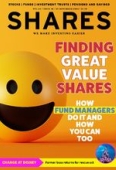Archived article
Please note that tax, investment, pension and ISA rules can change and the information and any views contained in this article may now be inaccurate.
Royal Mail can only dream of the efficiency gains achieved by Procter & Gamble

Management teams often talk the talk about streamlining a business but find it much tougher to walk the walk.
Just look at Royal Mail’s owner International Distributions Services (IDS) which for years has struggled to achieve the efficiencies it has promised thanks to a toxic relationship with its workforce.
The combination of weak parcel volumes and an inability to push through productivity improvements while in negotiations with the Communications Workers Union pushed the postal business into a £219 million loss for the six months to 25 September compared with a £235 million profit in the prior year.
This is among the most egregious examples but there are plenty of firms which have seemingly plucked figures out of the air when it comes to cutting costs. The risk is that short-term savings hit operational performance and a company loses important skills and capacity which subsequently must be added back at an even greater cost.
It was therefore refreshing to witness the latest investor day (17 November) from US consumer goods firm Procter & Gamble (PG:NYSE). The $341 billion cap has demonstrably delivered on the promises it made to shareholders back in 2018.
The company behind brands such as Head & Shoulders, Olay and Pampers has reduced the number of manufacturing sites by 20%, manufacturing platforms by 50% and its overall headcount by 30% once you factor in businesses it has sold off.
Procter & Gamble has moved to scale back external advertising, public relations and spending with other outside agencies, office buildings by 65% and its research and development centres
by 30%.
It looks like the company has continued to perform through this period too with average organic sales growth of 6% (3% on a volume basis) and core earnings per share growth of 12% at constant currency.
Procter & Gamble has also been able to reward shareholders handsomely – with $65 billion doled out over the four-year period in dividends and share buybacks. The shares have achieved a total return of more than 70% over the last four years.
Recent third quarter results were strong and as Berenberg analyst Fulvio Cazzol observed: ‘Management’s guidance continues to reflect higher elasticity and the company’s ability to defend share.’ In other words, despite pushing through higher prices, consumers are still willing to buy its products.
The company has reiterated targets of organic sales to grow ahead of the market, core earnings per share growth of mid-to-high single digits and a ratio of free cash flow to earnings of at least 90%. This focus on cash flow is encouraging – it suggests a business which is serious about performing rather than manipulating earnings to give the appearance of strong performance.
Killik’s senior equity analyst Andrew Duncan says: ‘Since its last investor day in 2018, P&G has delivered on its productivity plans, whilst investing back into the business to drive sales and earnings growth above the market.
‘Looking further out, we believe P&G can continue to outperform its peer group in terms of organic sales and earnings growth over the medium and long term, supported by a superior product offering and ongoing improvements in its supply chain.’
Important information:
These articles are provided by Shares magazine which is published by AJ Bell Media, a part of AJ Bell. Shares is not written by AJ Bell.
Shares is provided for your general information and use and is not a personal recommendation to invest. It is not intended to be relied upon by you in making or not making any investment decisions. The investments referred to in these articles will not be suitable for all investors. If in doubt please seek appropriate independent financial advice.
Investors acting on the information in these articles do so at their own risk and AJ Bell Media and its staff do not accept liability for losses suffered by investors as a result of their investment decisions.
Issue contents
Feature
- Fund manager optimism starts to return as equity inflows hit 35-week high
- Finding great value shares: how fund managers do it and how you can too
- Watch out for changes to dividend and capital gain allowances
- Is the hardy US shopper starting to feel the pinch?
- How I invest: the big lessons learned from a stock-picking journey
- Emerging markets: Views from the experts
- Find out about the top performing Indonesian market
Great Ideas
News
- Are dividends in the UK banking sector safe during a recession?
- How Currys shares have charged higher ahead of key trading period
- Why Zoom woes continue as it lowers revenue guidance
- New surge in China Covid cases halts rally in Asia-related stocks and investment funds
- Signs of life appear in the UK IPO market: Grindr shares gain 330% on debut
- Hilton Food shares in freefall after second warning in two months
 magazine
magazine








